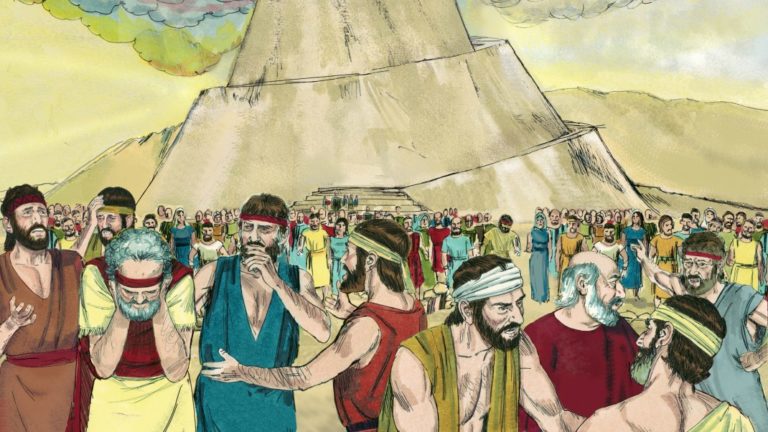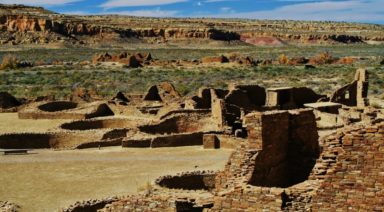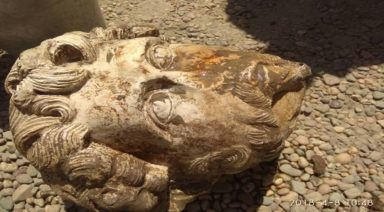The Tower of Babel Story: A Cross-Cultural Tale

Have you ever stopped to marvel at the vast variety of languages on Earth? According to Ethnologue, there are about 7,000 total languages found throughout the world. Where exactly did they all come from?
Although there are many hypotheses regarding the origin of language, there is no one general consensus amongst scholars. The oldest belief — that there was a single language that eventually evolved into many — is detailed in many Tower of Babel stories from various cultures. The similarities and differences of these fascinating tales still leave us with unanswered questions.
Tower of Babel Bible Story
The most famous Tower of Babel concept is the one that appears in Genesis.
In the famed tale, the people of the world came together to build a tower that would be tall enough to reach the heavens. At the time, there was one universal language on the planet, which made it easy for the people to communicate with one another and facilitate the tower’s construction.
However, this endeavor dismayed God, as he perceived it to be a shortcut to gain entry into heaven. He decided to put a stop to the construction by confusing the people’s language and scattering the humans all over the world.
Other Tower of Babel Stories
The Tower of Babel tale isn’t exclusive to Christianity or Judaism. Other cultures and religions have their own stories about the Tower of Babel.
Mormonism
The Church of Jesus Christ of Latter-Day Saints cites the Genesis tale, but there is another part of the Tower of Babel story that is specific to the Mormon faith.
According to the Book of Ether in the Book of Mormon, God changed the language of the people to thwart their plans of getting to heaven — except for a few. A man named Jared and his brother both prayed to God that he would not change their language because they still wanted to talk to their families.
Because Jared and his brother were “righteous men” who obeyed the word of God, God answered their prayers and let them keep their language. The disciples of these men became known as the Jaredites, who eventually made their way to the promised land of America.
Sumerian
Sumerian culture talks about a ziggurat called Etemenanki. Known as the “House of Foundation of Heaven on Earth,” Etemenanki was dedicated to Marduk, the patron deity of Babylon. It measured roughly 300 feet tall and featured seven levels.
Today, only the remains of Etemenanki are visible, residing in modern-day Iraq. However, they serve as potential evidence of the existence of the famed Tower of Babel.
Islam
A section of the Qur’an mentions an incident that resembles the Genesis Tower of Babel story, except there are a few key differences. In the Islamic tale, the story takes place in Egypt, and it is the Pharaoh who orders a minister named Haman to build a tower that reaches the heavens.
Judaism
Similarly, Jewish historian Flavius Josephus links the tower’s construction to Noah’s great grandchild, Nimrod. According to the Old Testament, Nimrod allegedly ordered the people to build the tower to rebel against God.
Greek
The tower’s construction is described in the Greek Apocalypse of Baruch, a text that was written between the first and third centuries. The text describes the condition of Jerusalem after the sack by Nebuchadnezzar.
The Greek Apocalypse of Baruch details a vision of Baruch ben Neriah, a scribe and disciple of the prophet Jeremiah. In the vision, he sees the punishment of the builders of the “tower of strife against God,” which many interpret to be the Tower of Babel.
Tower of Babel: Truth to the Story?
All of these stories, despite coming from different cultures and religions, bear an uncanny resemblance to one another. Can this be brushed aside as a bizarre coincidence, or is there some truth to the story of the Tower of Babel? Continue to explore this intriguing topic on your own to come to your own conclusions about the tale’s authenticity.
Want more like this article?
Don’t miss Ancient Civilizations on Gaia to journey through humanity’s suppressed origins and examine the secret code left behind by our ancestors.
Has the City of Atlantis Been Discovered in the Eye of the Sahara?

If you feel challenged by our relatively unconscious society, you may be one of the many dreamers who fantasize about the lost city of Atlantis. Some believe the Eye of the Sahara in Mauritania holds the secrets we’ve long imagined to be true. Stretching 14.6 miles across, the Eye appears to be from another world. Considering Plato’s writings on the subject, it’s possible this incredible structure is the final resting place of millions of Atlanteans.
While Plato’s descriptions of Atlantis are epic and mind-blowing, many believe he barely scratched the surface. He described Atlantis as a massive formation of concentric circles, alternating between land and water, similar to how the Eye is seen today. He emphasized that Atlantis was a wealthy, utopian civilization that created the basis for the Athenian democratic model. Plato then described the land as rich in gold, silver, copper, other precious metals, and gemstones.




































